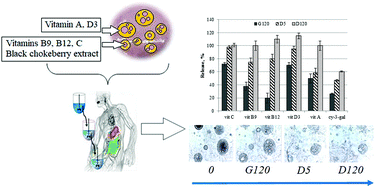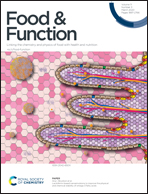Designing multiple bioactives loaded emulsions for the formulations for diets of elderly
Abstract
In this study, a stable double emulsion loaded with essential bioactives for the elderly was prepared using a two-step mechanical emulsification process. Vitamins B6, B12, and C and anthocyanin-rich black chokeberry pomace extract were added in the inner water phase and vitamins A and D3 were added in the oil phase of the double emulsion. The loaded emulsion showed excellent creaming stability (<96%), even distribution of droplet size, and high viscosity during 30 days of storage. The fair encapsulation efficiency (75.00–99.37%) and the encapsulation stability (74.00–95.98%) of the bioactives during storage for 30 days indicate the successful protection of vitamins and anthocyanin-rich black chokeberry pomace extract from environmental factors. For all vitamins, controlled release during digestion of double emulsion was observed. At the end of the duodenal phase, approximately 100% of the vitamins were released from the loaded emulsions. However, the release kinetics of vitamins under gastric conditions differed: 71.75% of vitamin C, 37.5% of vitamin B9, 20% of vitamin B12, 70% of vitamin D3, and 50% of vitamin A were released at the end of the gastric stage of digestion. 26.38% of the black chokeberry pomace extract was released in the gastric fluids and 46.95% of the extract was found in the soluble part of the digesta at the end of the duodenal phase. The study demonstrates that a multiple bioactives-loaded double emulsion can be successfully used for formulations for elderly people's diets to deliver priority bioactives.

- This article is part of the themed collection: 8th International Symposium on Delivery of Functionality in Complex Food Systems (DOF 2019)


 Please wait while we load your content...
Please wait while we load your content...